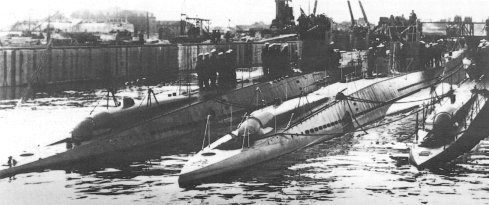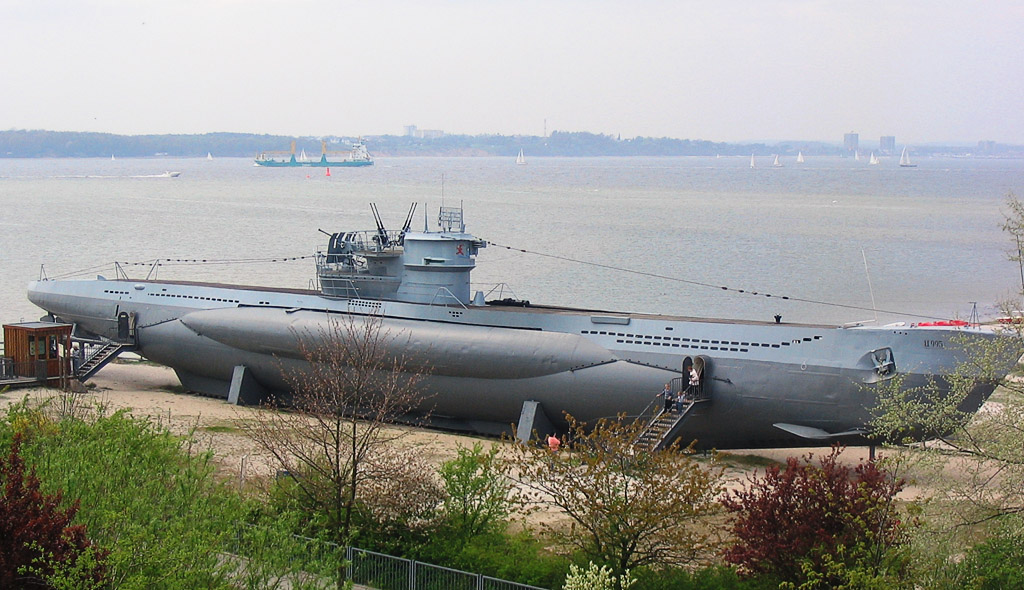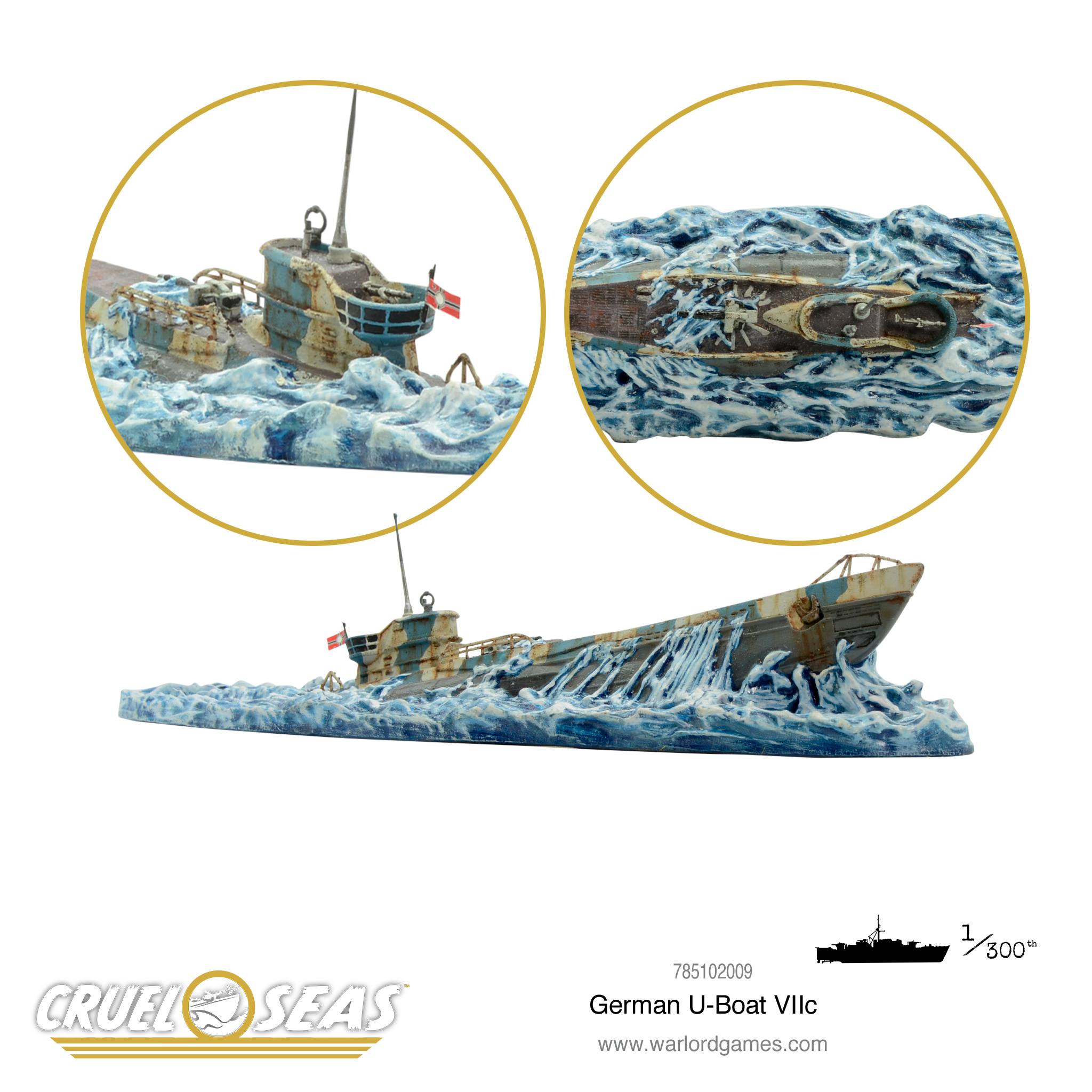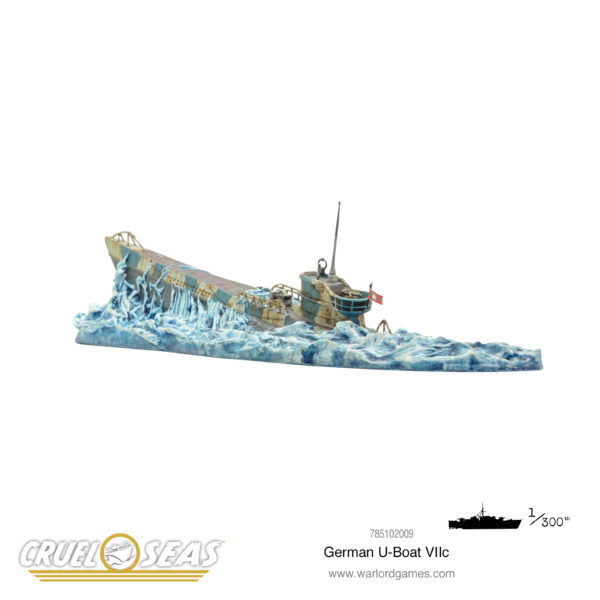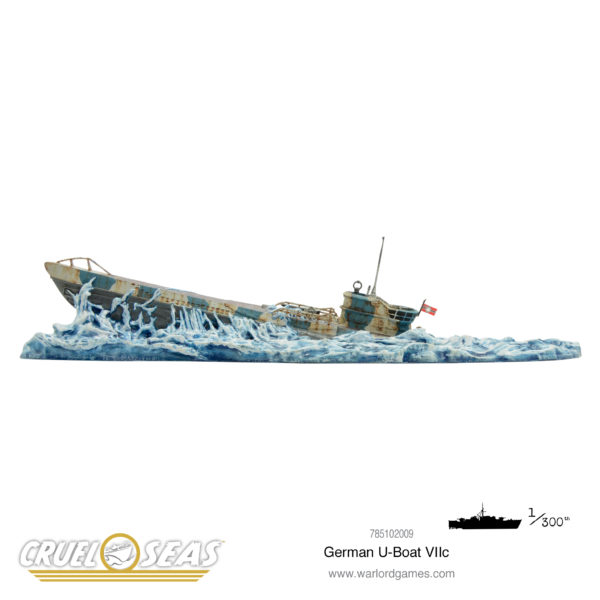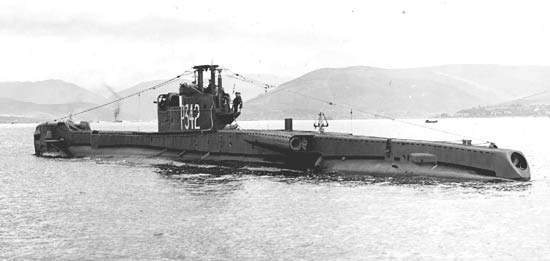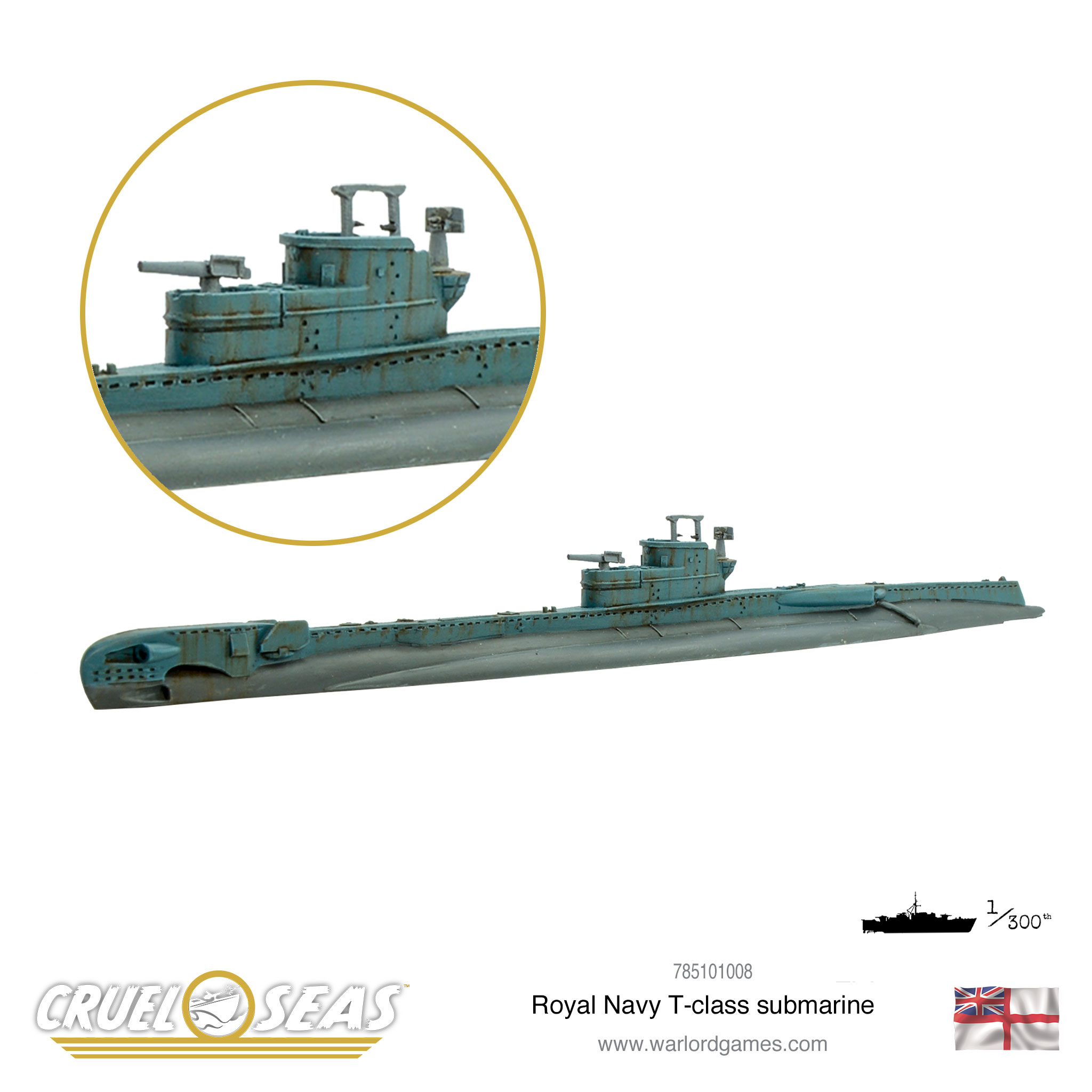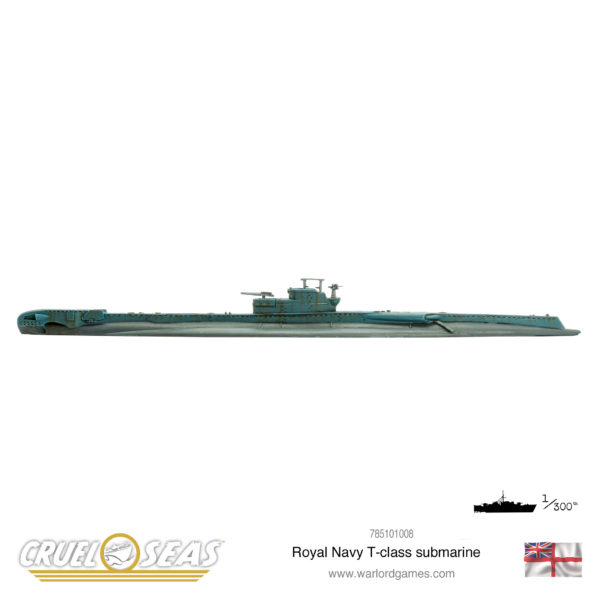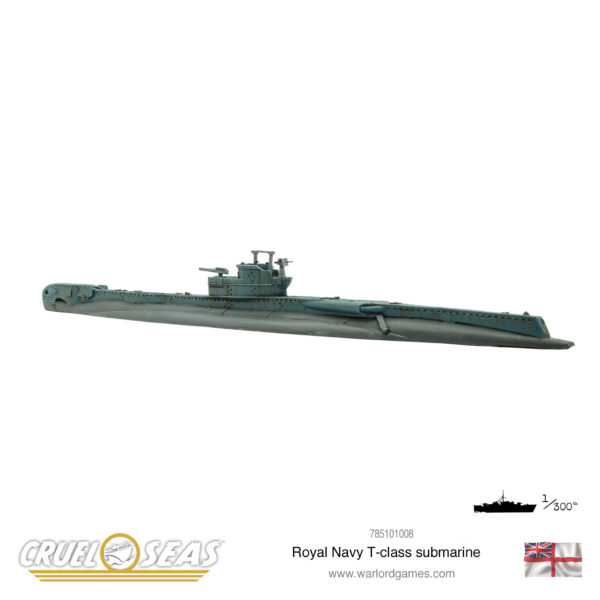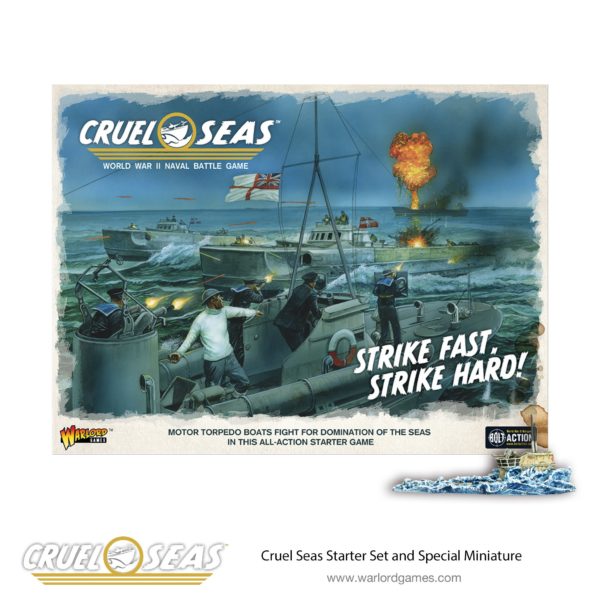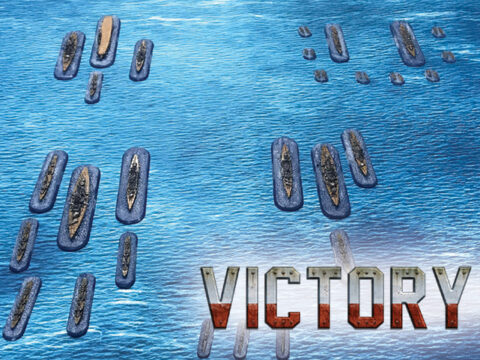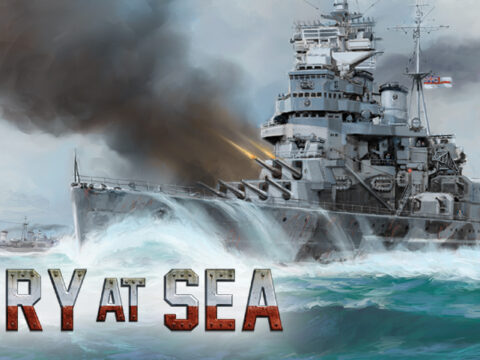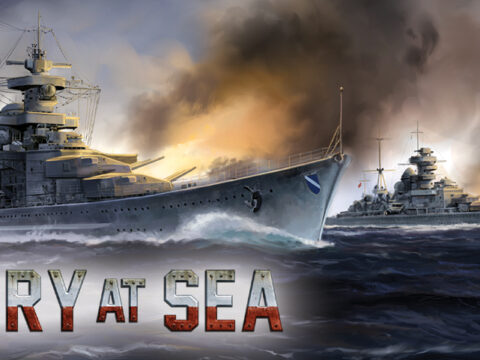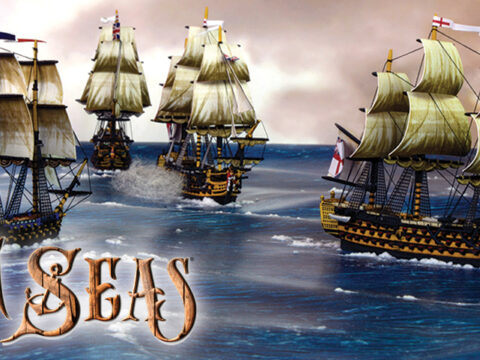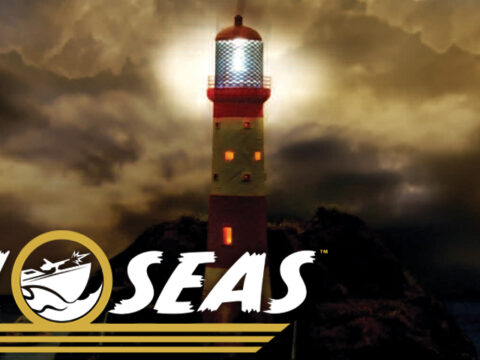The German U-Boat VIIc will shortly be emerging from the depths. We compare it to the Royal Navy T-class Submarine in Cruel Seas.
German U-Boats
Submarines saw tremendous success in the first World War- they were a sharpened and precise instrument of naval blockades. They were not particularly manoeuvrable whilst submerged, travelling like any other surface vessel. However as radar and aircraft detection techniques improved, so too did the ability of submarines to remain submerged. This was particularly evident in German developments.
Winston Churchill said that the only thing that really worried him was the “U-Boat peril”. Indeed, had Doenitz, veteran German U-Boat commander had gotten his way, the U-boat threat would have been damningly more significant. The German high command disagreed with his ideas, and thus he only began the war with 55 submarines, rather than the 300 he had hoped for.
Until the end of 1942, the Germans sunk an average of 14 ships for each submarine lost. Since 1943, the rate dramatically reduced and submarine losses were very high. Though Doenitz had become head of the German Navy by this time and had ramped up the production of U-Boats, it was too late in the war to make as significant an impact as it might have done at the outset of the war. The allies had now had time to develop anti-submarine tactics. During the war, they sunk a total of 3000 allied ships, mostly merchants, 14.5 million tons of shipping, and lost almost 800 submarines, almost two-thirds of the total number of U-boats produced.
U-Boat VIIc
The Type VII formed the backbone of Germany’s mighty U-boat fleet throughout the Second World
War, sinking vast quantities of Allied shipping but suffering horrific casualties in return. They were the most widely-produced submarines in history. 703 were built, of which only one (U-995) survives today. The fate of most was a watery grave at the hands of Allied escorts and aircraft or scuttling at the hands of the Royal Navy during Operation Deadlight in the winter of 1945/46.
Of the Type VIIs, the VIIC was the most numerous. With 568 produced from 1940 to 1945, it was an effective (if somewhat cramped and uncomfortable) craft, with a range of around 8500 nautical miles and a maximum speed of just under 18 knots surfaced and about 7 and a half knots submerged. Well-armed from the outset with 4 bow torpedo tubes and a single stern, as well as an 8.8cm deck gun and (later in the war) various smaller anti-aircraft weapons, the Type VIIC sent Allied shipping to the bottom in vast numbers before Allied air superiority over the Bay of Biscay and advances in anti-submarine warfare began to turn the tide.
In Cruel Seas:
Our dynamic new model depicts a Type VIIC boat bursting through the waves as it surfaces at high speed, perhaps for a night-time torpedo attack, or to engage targets with its deck gun. It can also be used to represent the earlier Type VIIB, made famous by Gunther Prien’s U-47 sinking the battleship Royal Oak at anchor in Scapa Flow – a blatant and daring challenge to the might of the Royal Navy.
Follow Prien’s example and send the mightiest Allied warships to the seabed, try to match Kretschmer’s tonnage record in U-99, or recreate U-96’s harrowing 1941 patrol, as immortalised (and sensationalised) by the film Das Boot. The time has come to unleash the U-Boot-Waffe!
The Type VIIC will be available to order from Friday 18th October. Watch this space!
British Submarines
Submarines were a secondary force in the large Royal Navy. They mainly attacked Axis warships and were responsible for the sinking of 39 German submarines, and participated in many intelligence operations. The main contribution of British submarines to the war effort was the sinking od Italian supply ships. These subs operated out of Malta in the Mediterranean Sea. This meant that German-Italian forces in North Africa had to deal with a shortage of fuel and supplies
The T-Class
The Triton (or “T”) class of submarines played a major role in the Royal Navy’s submarine force during the Second World War. Formidably armed with no fewer than eleven torpedo tubes, a 4-inch deck gun, and an Oerlikon 20mm anti-aircraft gun, these mighty vessels served ably in the North Sea, the Bay of Biscay, and especially in the Mediterranean. Of the 53 built, 15 were lost in action. At the end of the war, the older vessels of the class were scrapped. The newest examples, however, were modernised and continued to serve well into the 1960s and ‘70s with the Dutch and Israeli navies.
Equipped with 8 (sometimes as many as 12) bow torpedoes the T-class followed the British doctrine of the time; whereby launching a massive salvo in a spread to guarantee the destruction of the target was the order of the day.
As such, the T-Class became an effective submarine killer. 14 Axis submarines were destroyed by the T-Class over the course of the war, and many were modified post-war to hunt Soviet intruders.
In Cruel Seas:
Our T-Class Submarine model depicts one of the “Group Three” boats. It has a welded hull without such niceties as handrails or jackstaffs due to wartime austerity measures. Ordered between 1940 and 1942, the Group Three boats comprised the majority of the T-Class fleet. Many went on to see service long after the war.
Used on the surface, as they often were during the war, they can wreak havoc on your foes. Follow the example of the Turbulent, which sank over 90000 tons of Axis shipping, or launch daring raids on harbours and anchorages with your 4-inch gun!


